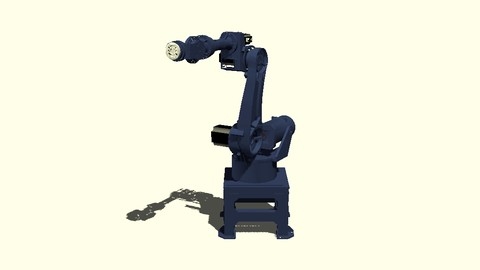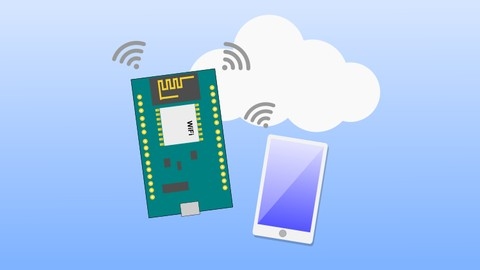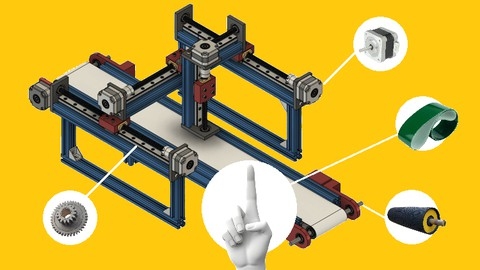Robotics is a fascinating and rapidly evolving field that combines elements of engineering, computer science, and artificial intelligence to create intelligent machines capable of performing a wide range of tasks.
Learning robotics can open doors to exciting career opportunities in diverse industries like manufacturing, healthcare, and exploration, while also empowering you to build your own robots and automate tasks in your everyday life.
Finding a comprehensive and engaging robotics course on Udemy can be overwhelming, given the abundance of options available.
You’re looking for a course that not only covers the theoretical foundations but also provides hands-on experience and practical projects to solidify your understanding.
Based on our in-depth analysis, we’ve identified Electricity & electronics - Robotics, learn by building as the best overall robotics course on Udemy.
This course offers a deep dive into the fundamentals of electronics and their application in robotics, guiding you through building circuits, understanding essential components, and even constructing your own servo motors.
The hands-on approach and comprehensive curriculum make it an ideal choice for both beginners and those with some prior experience in electronics.
However, if you’re looking for a course focused on a specific aspect of robotics or tailored to a particular skill level, we have other great options to explore.
Keep reading to discover our recommendations for courses on industrial robotics, ROS, Arduino, and more, ensuring you find the perfect robotics course to embark on your learning journey.
Electricity & electronics - Robotics, learn by building
The course covers the fundamentals of electricity and electronics, starting from the basics of DC and AC electricity.
You will learn about components like resistors, capacitors, diodes, LEDs, and microchips.
The course takes a hands-on approach, guiding you through building circuits on a breadboard and using tools like multimeters.
One of the key focuses is understanding how to read schematic diagrams and then building the circuits they represent.
You’ll learn about essential concepts like Ohm’s law, voltage dividers, and pulse width modulation (PWM).
The course also covers more advanced topics such as transistor amplifiers, operational amplifiers (op-amps), and their applications in areas like audio amplification and biofeedback systems.
Robotics is a significant part of the curriculum.
You’ll learn about components crucial for robotics, such as servo motors, motor control circuits (including H-bridges), and continuous rotation servos.
The course even delves into building your own servo motors and hacking existing ones for specific purposes.
Power supplies, an essential aspect of electronics, are covered in detail.
You’ll learn about transformers, voltage regulators, and even salvaging parts from scrap electronics.
The course also touches on high-power transmission, which is crucial for applications like electric vehicles and mobile robots.
Throughout the course, you’ll encounter bonus lessons that address common student questions, provide additional explanations, or explore related topics like comparators and hysteresis.
The course includes quizzes to test your understanding of the material covered.
You’ll gain hands-on experience building circuits and a solid theoretical foundation to understand how electronic components work together.
Industrial Robotics
This course on Industrial Robotics equips you with a strong foundation in robot design, operation, and programming.
You delve into the mechanics of a 6-axes arm, a workhorse in industrial settings.
You master the art of using frames and Euler angles, essential for describing a robot’s position and movements.
Your journey continues with direct and inverse kinematics, enabling you to command the robot’s movements with precision.
You will be able to determine the robot’s position from its joint angles and vice-versa – crucial for programming complex tasks.
You then explore path planning, learning to chart out efficient and safe trajectories for your robot.
This involves understanding concepts like point-to-point motion, path interpolation, and workspace monitoring, ensuring your robot operates within safe boundaries.
You learn to avoid collisions, a critical aspect of real-world robotics.
The course then shifts gears to robot programming, introducing you to the software and hardware that bring these machines to life.
You delve into motion control, learn about servo drives and their tuning, and become familiar with the robot’s internal communication network, or hardware topology.
You gain practical skills in robot calibration, ensuring your robot moves with pinpoint accuracy.
Finally, you step into the world of simulations using industry-standard software like Unity.
You learn to create digital twins of your robots, allowing you to test your programs in a virtual environment before deploying them in the real world.
Hands-On Robotics with Arduino, Build 13 robot projects
This course is a guide to building and programming various robots using the Arduino platform.
You will start by learning the fundamentals of the Arduino microcontroller and setting up the development environment.
Next, you’ll construct a time-controlled robot by wiring components like DC motors and motor drivers.
The course covers key concepts like H-bridge circuits for motor control.
You’ll program the robot to move in different directions, take turns, and stop permanently using functions and infinite loops.
The course then dives into serial communication, allowing you to control an LED and the robot from a PC.
You’ll create your first Android app using AppInventor2 and explore wireless communication by building a Bluetooth-controlled LED project.
From there, you’ll develop more advanced Android apps to control robots wirelessly.
Projects include a “SmartBot” with on-screen buttons, an “AcceleroControl Robot” using the accelerometer sensor, and a voice-controlled “VoiceBot” leveraging speech recognition.
The course also covers line-following robots (black and white lines), object follower/repeller/avoider robots, and light follower/repeller/avoider robots using IR sensors.
You’ll learn the programming logic behind each type of robot.
Throughout the course, you’ll gain hands-on experience with Arduino programming, sensor integration, motor control, and developing user interfaces for Android apps to control robots wirelessly.
ROS2 Robotics Developer Course - Using ROS2 In Python
You’ll start with the essentials, setting up your environment on Ubuntu 22.04, and installing ROS 2 Humble, the popular distribution designed for robotics.
The course then delves into the core concepts of the ROS 2 framework, covering everything from creating workspaces to building publishers and subscribers, allowing you to communicate data between different parts of your robot.
You’ll learn to use Python, the go-to language for ROS development, and get hands-on experience with real-world projects.
Beyond the basics, you’ll dive into powerful simulation tools like Gazebo and Ignition Gazebo, which allow you to create realistic virtual environments for your robot.
You’ll learn to model robots and their surroundings using SDF, a common format for describing robotic systems.
This section also covers working with sensors and plugins, crucial for simulating realistic robot interactions with the environment.
The course concludes with a dive into advanced ROS 2 features, such as security configurations and building ROS 2 from source.
You’ll also learn how to connect ROS 2 with ROS 1, a valuable skill if you are working with legacy robots.
Internet of Things IOT, Robotics and Hacking with NodeMCU
This course takes you on a journey through the world of the Internet of Things (IoT), robotics, and ethical hacking using the NodeMCU development board.
You begin with the fundamentals, installing the necessary software like the Arduino IDE and connecting your NodeMCU to your computer.
You then dive into programming with simple projects like blinking an LED and writing your first “Hello World” program.
You then advance to building exciting IoT projects.
You discover how to use Blynk, a platform for controlling devices with your smartphone, by creating a light intensity reader that sends data directly to your phone.
You deepen your knowledge by connecting projects to the internet using PHP and MySQL, building a car park system that monitors available spaces in real-time.
You even explore network creation by learning how to build your own Wi-Fi access point using NodeMCU.
This course also challenges you with robotics projects.
You learn how to assemble and program a robot car controlled wirelessly with your smartphone using Wifi Direct.
This project allows you to combine hardware assembly, programming logic, and wireless communication principles.
You further develop your understanding of wireless technology by exploring its potential vulnerabilities.
You learn how to create a Wi-Fi jammer and cutter, and even a BadUSB device, highlighting the importance of ethical hacking and security awareness.
Robotics & Mechatronics 1: Machine Theory & Production Lines
This robotics course takes you on a journey, starting with the basic building blocks of machines like aluminum profiles, motors, bearings, belts, screws, and nuts.
You learn how these parts work together and how to choose the right ones for different machines.
You will even learn how to size motors correctly based on the mechanical load they need to handle.
Then, you’ll explore how machines are used in production lines.
You’ll discover how product storage systems, like hoppers with different discharge mechanisms, and tank liquid level measurement work.
You’ll also learn about various conveying systems, from simple flat belt conveyors to more complex elevator and screw conveyors, and how to design them for specific needs.
You will then dive into the world of parts feeding systems, learning about step feeders, vibrational bowl feeders, and linear feeders.
The course also covers turntables and starwheels, which are used for efficient parts movement in factories.
You’ll then explore linear and cartesian localization systems, understanding single-axis and 3-axis linear motion, and learn about different guide systems like lead screw and timing belt rail guides.
Next, you’ll discover the fascinating world of end effectors, the tools robots use to interact with their environment.
You’ll learn about different types, including grippers, vacuum end effectors, and rotational/motorized end effectors.
The course then delves into industrial robots, including SCARA and delta robots, and explores the essential concepts of forward and inverse kinematics, which govern robot movement.
You’ll even get to analyze a real-world case study involving a bottle filling and capping system.
This course equips you with a strong foundation in the core principles of robotics and mechatronics, setting the stage for you to explore more advanced concepts like 3D CAD machine design in the next course.
Also check our posts on:






